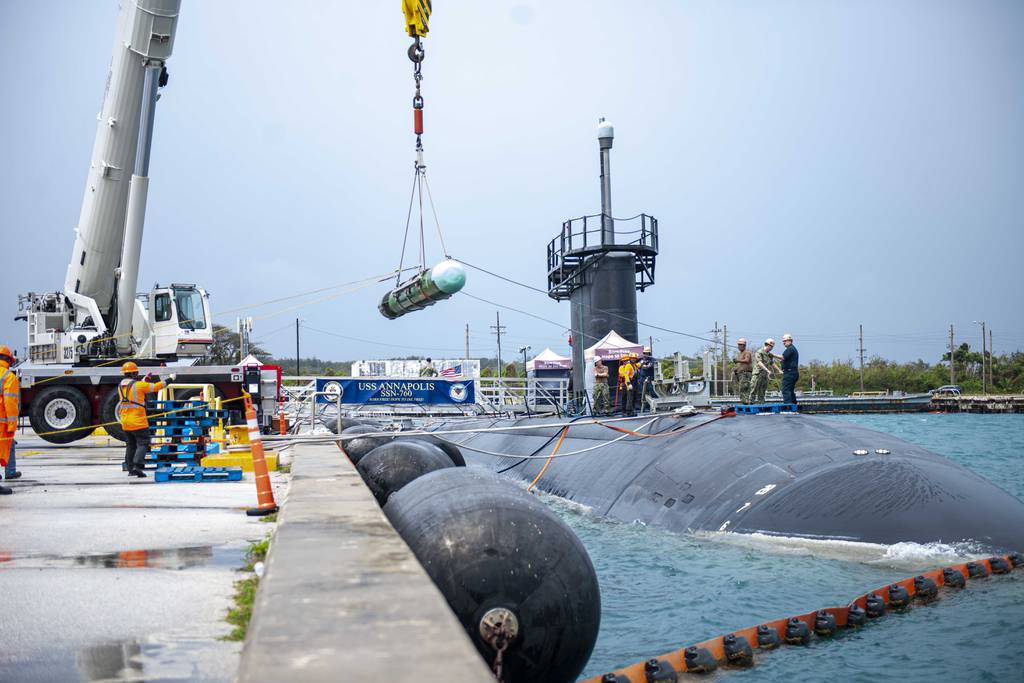
NATIONAL HARBOR, Md. — The U.S. Navy is using its effort to strengthen the weapons-industrial base as something of a test run for larger spending in the shipbuilding and submarine sectors, a top acquisition official said.
All three areas face similar challenges, such as a lack of output at key suppliers, which prevents prime contractors from increasing deliveries to the Navy.
The service would like to strengthen the supply chains and increase delivery quantities in all three industrial bases, noted Vice Adm. Frank Morley, the top uniformed deputy to the Navy’s acquisition chief.
However, they have vastly different construction timelines. This means the weapons-industrial base — the one with the shortest manufacturing timelines and therefore the one that will show a return on investment first — is paving the way for how the Navy will manage the submarine and surface combatant counterparts.
Expanding the munitions-industrial base is not as complex as expanding shipbuilding-industrial bases, he noted during a panel discussion at the Navy League’s annual Sea-Air-Space conference. “But we can learn things about what stable funding does, what multiyear procurement [contracts] do, what kind of incentives” are effective in contracts, and how government spending can encourage additional private sector spending in facilities and workforce development, he added.
Specifically, he told Defense News, the Navy is improving the way it pairs public and private dollars, as well as how to spend that money at private companies and and government labs or warfare centers to benefit the final weapons production lines.
Morley added that the Navy had to learn how to best analyze the health of a supply base so it could understand which lower-tier vendors experience the biggest impact on delivery schedules and could most benefit from a one-time payment to expand their output.
“I look at munitions as our opportunity to teach ourselves many of the things that we can do in shipbuilding in parallel,” he said.
The Navy has increased its weapons spending in recent years, culminating in the fiscal 2024 budget request that included a historic $6.9 billion to buy missiles and torpedoes, $380 million specifically to address supply chain bottlenecks, and a request for authority from Congress to kick off four multiyear procurement contracts for weapons.
With the goal of increasing weapons output and reducing manufacturing timelines, Morley told Defense News, “we can do this in two, three, four years if we stick to it and do it right.”
He said that as individual vendors receive money from the Navy and prime contractors to expand their facilities, hire more workers or adopt advanced manufacturing processes, the Navy expects to see incremental gains that will eventually lead to “a larger magnitude impact.”
Learning how to measure that incremental progress will be important, he explained.
“Munitions is our guiding light as to the details of … what to measure to show you’re getting effect because the ultimate outcome on shipbuilding has got such a long lead that you’ve got to measure incrementally as you go,” he explained.
James Geurts, the former Navy acquisition chief who moderated the panel discussion, explained the importance of measuring this progress, noting that without proof that something good is coming from the billions of dollars in spending, it’ll be harder to convince lawmakers to keep the money coming.
“We’ve got to be able to show that, collectively between the public side and the private side, we can put those resources to bear to produce outcomes. I think if we can do that and show that those resources are making changes and those are reflected in outcomes, that will then accelerate more resources coming in,” Geurts noted.
Author: Megan Eckstein
Source: DefenseNews



